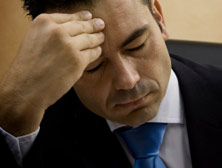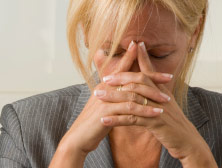MigraineHelper.com
 |
 |
 |
 |
Sport MigraineExercise and sports activities are one of the many triggers of migraine attacks reported by migraine sufferers. Migraine specialists often refer to these attacks as "effort" migraines and have found that such attacks manifest themselves in a variety of ways. Exertion And Effort MigrainesDoctors differentiate between exertion and/or effort "headaches" and effort "migraines" depending on the severity of the condition experienced by the patient. Exertion and effort headaches can occur after any form of exercise, even in people who have no history of migraines. Effort headache can usually be avoided by not exercising continuously for prolonged periods of time. Effort migraine is a more severe from of this headache, which may bring with it all the usual symptoms of migraine (blurred vision, vomiting, etc.). Effort migraine can occur within minutes of finishing an exercise session or even hours later. If the attack begins during an exercise session, it usually doesn't automatically stop when the patient stops exerting his or her body. Prolonged Exertion MigraineIf a person already has a history of migraines, he or she may find that exercising for long periods of time is especially likely to trigger a migraine attack. Again, the attack may start during a long exercise session or even minutes or hours after the patient stops exercising. What To DoIf you think that your exercise or sports routine may be triggering your migraines, you should take a break from your regular activities until you've consulted your doctor and devised a treatment or prevention strategy. Taking medication before you begin exercising may be an option for dealing with your migraines. Alternatively, you may have to make some changes to your exercise routine, diet or exercise environment. Don't Give Up HopeIn some cases, prolonged exercise and exertion triggers a migraine attack only in combination with other factors such as temperature, bright lights, certain smells or consuming certain drinks. Therefore you may not have to give up your beloved sports activity just to get rid of the migraines. If you eliminate the other possible triggers in your exercise environment, you may be able to control migraines which occur during or after exercise. Keep A RecordYou should keep an eye out for other possible triggers when you exercise. For example, do you consume a high-caffeine sports drink while you are training? Are the lights in your gym particularly bright? Do you listen to loud music while exercising or watch flickering images on a TV screen while running on the treadmill? Is it particularly hot or cold in your exercise area? Record all these details, no matter how small, and together with your migraine specialist, see if you can detect a pattern. In the end, you may have to compromise on the type of exercise you do. For example, it could be that you can swim only in a non-chlorinated pool, or that you have to switch from high-impact, prolonged exercise to shorter bursts of activity, or longer sessions of more gentle activity such as cycling or walking. It's unlikely that you will have to give up exercise altogether in order to control your migraines.
|
n |